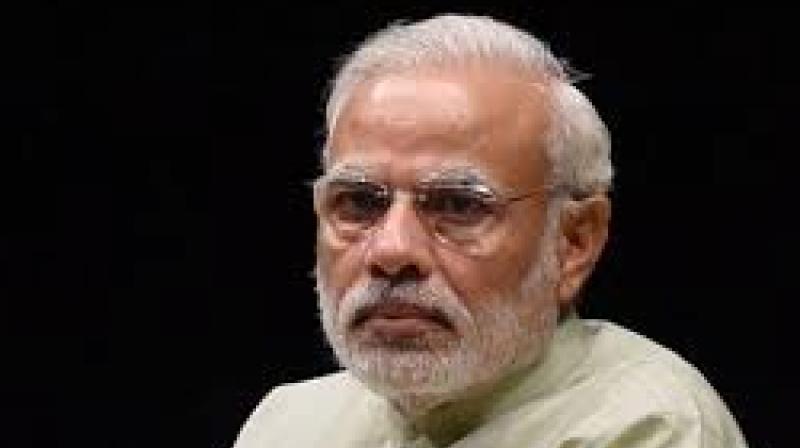Temple in the age of colliders

SOME countries dream of building the next generation colliders to unlock the secrets of the universe, behemoths that will dwarf the Large Hadron Collider (LHC) that was unveiled in 2008 by the European Organisation for Nuclear Research, CERN. Others build giant statues of old heroes or focus on building more temples, a throwback to the Communist regimes that have become history or to more ancient times when building (or destroying) places of worship symbolised power. And in these differing perspectives we have a clear delineation between forward-looking and backward-looking nations.
If it is the age of frontier technology under Xi Jinping in China, in Narendra Modi’s India it is revivalism of what is largely an imagined past, a past that is as far removed from current concerns as it possibly can get.
The LHC, built 150 metres underground on the French-Swiss border and boasting a 27-km-wide circumference, has been the core of particle physics research. For ordinary people, its significance is hard to grasp.
Scientists explain that the LHC smashes subatomic particles at nearly the speed of light, and has given the world breakthrough discoveries such as the Higgs- Boson. They believe the Higgs is a fundamental building block of the universe.
But fundamental questions about our universe are still a mystery and cannot be answered by the limitations of the LHC, the reason why more nations are embarked on a Holy Grail of building the next-generation experiments or the super colliders. Japan is planning an International Linear Collider, while Cern is going ahead with a Future Circular Collider. The most ambitious is China’s project, which is scheduled to break ground in 2021. Experts think this collider could well define the frontiers of particle physics for the next two generations.
As China shows its technological prowess, the Narendra Modi government in India is pushing the country towards a backward agenda.The most grandiose of the Modi government’s projects, that is, ignoring the scale of the calamity inflicted by the November 2016 demonetisation exercise, has been the 182-metre-high statue of Sardar Vallabhai Patel, a freedom fighter and a leading light of the Congress Party who served as home minister in Jawaharlal Nehru’s government. While the Statue of Unity, as it is called, was patently an attempt to appropriate one of the stalwarts of the freedom struggle to cover the BJP’s lack of any of its own, such memorials - there is another massive statue of Shivaji, the 17th century Maratha warrior, in the Arabian Sea, off the Mumbai coast - are integral to Mr Modi’s idea of a “New India”. As he declared in a promotional video: “See our height, measure this nation’s height. This is what we want.”
Is that what Indians really want? Not really, as last week’s defeat of the BJP in three key states in the Hindi heartland show. The statues, the renaming of cities with Muslim and Mughal names and Mr Modi’s talent for looking back in anger have failed to provide the outcome the BJP and its ideological custodian, the Rashtriya Swayamsevak Sangh, were expecting. Nor did the customary aggressive attack on the Congress and the calumny against Jawaharlal Nehru do it much good. And yet, the focus of the RSS-BJP campaign in the next general election, according to most reports emanating from these power centres, is expected to be reviving its Ram temple campaign. Since the development agenda on which Mr Modi swept to power in 2014 has been exposed for the sham it is, the BJP would use the demand for building the temple, according to some political analysts, as the overarching narrative to win the general election. If that is indeed the case, it would reflect poorly on Indians who surely should be thinking more of the
future than of the past. It’s a bizarre agenda for a country that aspires to be the rising star of Asia, if not of the world.
Nations do hark back to the past to build bridges to the present but seldom has a country been naïve enough to believe that altering or reconstructing the past is a panacea for a bleak future. Hopefully, the dissension within the party should give Mr Modi and the BJP party bosses some pause. At least one forthright BJP member of Parliament has publicly criticised the leadership for pursuing a backward looking agenda - he named the temple issue as one of the pointless issues - and alienating the people on its home turf. But panic over losing the 2019 general election may well propel the BJP to ignore sane advice.
It is not as if China does not flaunt its desire for a return to the glory days of its past. The location of its proposed super collider appears to have been chosen with some thought. It will be built near Qinhuangdao at the end of Great Wall, bringing together an enormous project that had its beginnings in the 7th century BC and a stupendous undertaking of the future.
China, among all nations, may be uniquely placed to pour enormous sums of money into research projects, but it is pursuing such projects with the clear goal of becoming the global leader in science, both theoretical and applied. The approach, notes French historian Francois Godement, director of the Asia and China programme at the European Council on Foreign Relations, is not just about making China a major cyber power, but “also about China’s capacity to shape the international governance of cyberspace according to its own interests”.
What India’s chest-thumping politicians given to braggadocio should also note is Godement’s observation that although China’s development in the digital and artificial intelligence arenas “have attracted so much hype abroad (that) it is sobering to read more modest assessments from Chinese sources themselves”.
Yes, India’s space missions are much to be proud of such as the Mangalayan or the Mars Orbiter Mission. But did they push back the frontiers? China has just launched the first mission to the dark side of the moon. It has entered lunar orbit and scientists around the world are watching the effort with admiration. Can India afford to continue to be trapped in an imagined past?
By arrangement with Dawn

